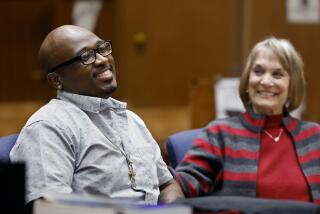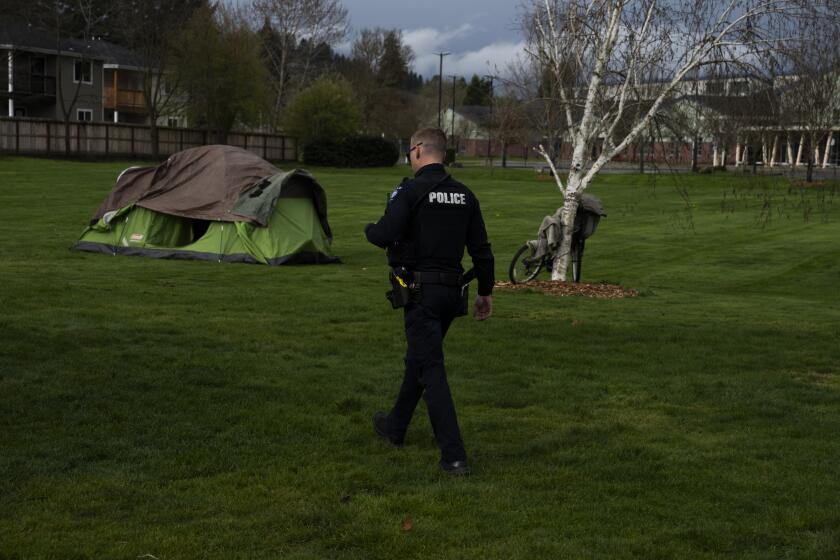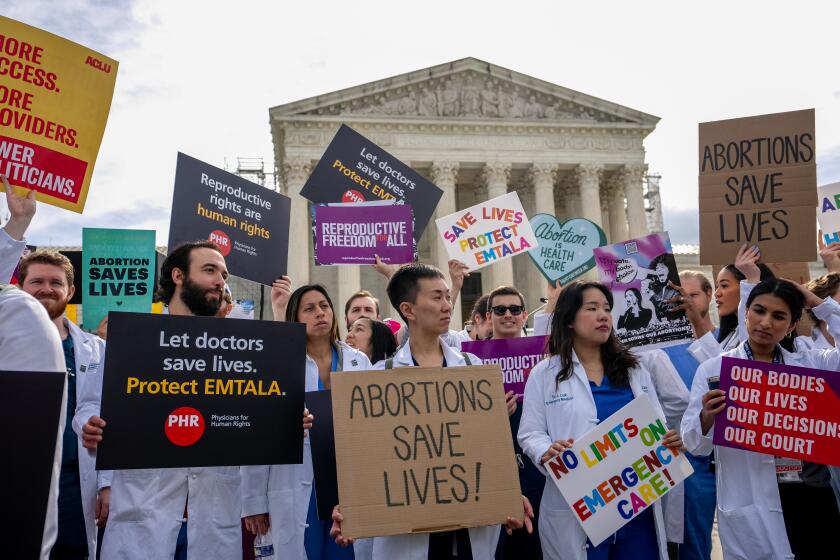Opinion: The links among incarcerations, plea bargains and violent neighborhoods
Over the last 20 years, violent crime in the United States -- both on a per capita basis and in actual numbers -- has decreased as the population has increased. Yet sections of the country, mostly impoverished urban neighborhoods, remain dangerously violent.
Two recent articles read together offer an interesting take on the problem. At the Atlantic, academic Heather Ann Thompson looks at the links between the nation’s explosive rate of incarceration and violence in urban neighborhoods. At the New York Review of Books, Jed S. Rakoff, a U.S. district court judge in New York, explores the murky -- and easily abused -- plea bargaining system that lands people in prison -- and has led to a remarkably high number of people pleading guilty to crimes they did not commit.
Neither gets at an underlying but contributing phenomenon that jarred me earlier in my journalism career when I spent a lot of time talking with young African American men in Detroit. Many lived with the expectation that they eventually would wind up in jail, a function more of the street culture and their perceptions of the criminal justice system than any direct intent to commit crimes. Part nihilism, part fatalism, it’s an outlook that both feeds into and is a result a law-enforcement system that ensnares people of color at higher rates than it does whites.
Thompson traces urban violence to the “war on drugs” and other policies that have led to a spike in the numbers of African American men, in particular, in prisons. She draws parallels to the bootlegging culture of prohibition. When booze was criminalized, control of it moved to the underground black markets, where codes are enforced by guns, not courts. Thompson puts too much weight, I think, on police-generated violence in modern troubled neighborhoods, but she is spot on when she looks at how deindustrialization and over-incarceration have destabilized communities -- particularly in the older northern and eastern cities:
“The quadrupling of the incarceration rate in America since 1970 has had devastating collateral consequences. Already economically-fragile communities sank into depths of poverty unknown for generations, simply because anyone with a criminal record is forever ‘marked’ as dangerous and thus rendered all but permanently unemployable. Also, with blacks incarcerated at six times and Latinos at three times the rate of whites by 2010, millions of children living in communities of color have effectively been orphaned. Worse yet, these kids often experience high rates of post-traumatic shock from having witnessed the often-brutal arrests of their parents and having been suddenly ripped from them.
“De-industrialization and suburbanization surely did their part to erode our nation’s black and brown neighborhoods, but staggering rates of incarceration is what literally emptied them out. … Such concentrated levels of imprisonment have torn at the social fabric of inner city neighborhoods in ways that even people who live there find hard to comprehend, let alone outsiders. As the research of criminologist Todd Clear makes clear, extraordinary levels of incarceration create the conditions for extraordinary levels of violence.”
The incarceration levels are tied, as noted above, to the war on drugs. But as Rakoff points out in his indictment of the plea-bargaining system, many folks wind up in prison because they have been strong-armed by prosecutors who carry all the power when it comes to deciding what charges to levy -- and what deals to offer.
It’s a lopsided system. By the time of arrest, or shortly afterward, the prosecutor is usually intimately familiar with the details of the alleged crime and the available evidence; the defense lawyer, especially when court-appointed, often has scant information and little time with the client before a plea deal is offered, Rakoff says (he focuses on federal cases, in part because state-level data aren’t available, but there is nothing to suggest the state courts operate much differently). And that can lead the innocent -- especially, let me add, those who view the system as gamed against them -- to plead guilty to avoid the perceived likelihood of a harsher sentence after a trial in which they have little faith justice will be served.
In the federal system, fewer than 3% of cases filed in 2013 headed to trial, Rakoff writes, continuing a decline that began with the rise in crime in the 1970s and 1980s (in 1980, 19% of cases went to trial).
“[T]he prosecutor-dictated plea bargain system, by creating such inordinate pressures to enter into plea bargains, appears to have led a significant number of defendants to plead guilty to crimes they never actually committed. For example, of the approximately three hundred people that the Innocence Project and its affiliated lawyers have proven were wrongfully convicted of crimes of rape or murder that they did not in fact commit, at least thirty, or about 10 percent, pleaded guilty to those crimes. Presumably they did so because, even though they were innocent, they faced the likelihood of being convicted of capital offenses and sought to avoid the death penalty, even at the price of life imprisonment. But other publicized cases, arising with disturbing frequency, suggest that this self-protective psychology operates in noncapital cases as well, and recent studies suggest that this is a widespread problem. For example, the National Registry of Exonerations (a joint project of Michigan Law School and Northwestern Law School) records that of 1,428 legally acknowledged exonerations that have occurred since 1989 involving the full range of felony charges, 151 (or, again, about 10 percent) involved false guilty pleas.
“It is not difficult to perceive why this should be so. After all, the typical person accused of a crime combines a troubled past with limited resources: he thus recognizes that, even if he is innocent, his chances of mounting an effective defense at trial may be modest at best. If his lawyer can obtain a plea bargain that will reduce his likely time in prison, he may find it ‘rational’ to take the plea.”
Key is that federal judges are not involved in the plea bargain until after a deal has been reached, which means there is little court oversight of prosecutors, giving them undue power. Although plea bargains might make the system run more smoothly, they are done out of public view, which means a judicial system that operates largely in the shadows.
“Such a secretive system inevitably invites arbitrary results,” Rakoff writes. “Indeed, there is a great irony in the fact that legislative measures that were designed to rectify the perceived evils of disparity and arbitrariness in sentencing have empowered prosecutors to preside over a plea-bargaining system that is so secretive and without rules that we do not even know whether or not it operates in an arbitrary manner.”
Rakoff suggests introducing a referee from the courts into the plea bargaining system, which makes sense. As does more adequately funding the federal court system to handle the absurdly high caseloads, which would give the judges more time to understand the cases, and plea deals, before them.
Still, better and broader solutions must be found. We need to look more closely at these relationships, and at stabilizing neighborhoods. Justice is about more than just punishing criminals; it is about fairness and equitable treatment, something we’re sorely lacking. Rethinking incarceration policies and taking a saner approach to policing is a start.
Follow Scott Martelle on Twitter @smartelle.
More to Read
A cure for the common opinion
Get thought-provoking perspectives with our weekly newsletter.
You may occasionally receive promotional content from the Los Angeles Times.







